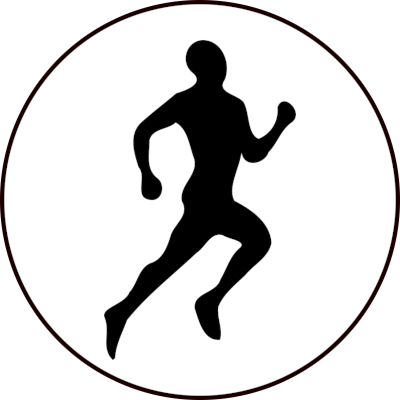I’m seeing weird results with my heart rate strap. My ground contact time is really low, but my vertical oscillation is really high! One indicates good form, the other indicates bad form. My subjective experience is that my vertical oscillation is low, but my garmin disagrees.
And I think the reason why is the movement of my breasts. I think they’re moving the sensor itself, and confusing its measurements.
Is that actually a thing? I’ve tried to find research or people talking about it, but all I can find is discussion on the impact of breasts on actual running performance, rather than on the measurement of it.
The strap normally goes just below the chest rather than on, so if the issue is due to movement, then that should minimise it.
Water or saliva can also aid electrical contact of the strap with your skin, if you’re not already doing that.
The strap sits in the right place, just below the breast crease. The issue is that the strap itself can’t be moved far enough away from that area to avoid breast movement
On really long races with a backpack, my HRM strap has often got nudged down so it’s practically round my abdomen, and it still worked fine. Why don’t you give it a go much lower and see what happens? That might help settle the breast question?
Can’t hurt to try I guess! I’ll give it a go
You could also try tightening the band a small amount to see if that reduces the oscillation measurement. You could also take a video of yourself running to confirm or deny what the strap is saying about your form.
So, it didn’t really seem to make a great deal of difference, but I’m not sure if I was able to get the band low enough. I had it right at the bottom of my sternum, but couldn’t go lower without it being weird and uncomfortable. And when it was still on my sternum, it was still partly under my bra, so there was likely still movement impacting it…
I’m sure I saw a video recently that talked about women-specific HRMs which attach onto the bottom of a sports bra rather than being on a strap. But I couldn’t find it again just now when I searched and I didn’t pay super close attention the first time, because I (a cis man) am not the target demographic. So I dunno if this specifically is what they’re supposed to solve, but it seems reasonable to think it might be.
Here’s a YouTube video for a women’s-specific HRM from the manufacturer.
I don’t think it’s the answer as such, but I think the answer is on the page for that product, which is to say my existing bras probably aren’t supportive enough. That product only works with high support bras, which mine aren’t…
They are just using electrical contact with the skin. In this X-Ray the electrical connections are made at the little tab at the top and bottom of the circuit.

This is not a MEMS based sensor or anything mechanical that can be changed by impacts. My understanding is that the electrical may have some drop out from signal pairing not being well matched.
In the early days of Garmin cycling computers. Bike mounted units that came packaged with a heart rate strap worked flawlessly. However, adding a new strap to pair with an old unit only worked around 2/3rds of the time and often resulted in returns comparatively speaking. It was one of the things I dealt with in the bike shops.
It’s not my heart rate measurement that has the issue. The device has an accelerometer in it to that measures running movement metrics, so it can determine things like stride length, vertical movement with each stride, ground contact time, and the ratio of time spent on each foot. What I think is happening is that because of the positioning of the strap, just below the breast crease, incidental breast movement is moving the strap and sensor enough to impact the accelerometers measurements.
Yeah, that sounds like a MEMS device and it will certainly have issues like that.
The more you restrict the worse your breathing will be too. Maybe just skip on that data point?
I have been experimenting with corsets and my back problems. I even tried it on a bike a few times. Holy hell that restricts total breathing capacity. I only tried to get it tight around ribs 5 & 6 (lowest 2 that come all the way around to the sternum). My resting heart rate and breathing are very low, but riding, I use it all. Riding with the corset cut my breathing capacity in half. I don’t think it was likely much tighter than a bra, but have never worn one.
My sister used to tape herself to do anything super active and tame the bongos, but she never stuck with an exercise routine like I did. I think it likely had to do with the tata troubles.
Personally, I don’t do the data thing any more. I used to do Strava a ton and I hunted KoM awards regularly. I had a couple dozen at my peak and most were in very active areas and hotly contested. After it became clear I’d never recover, I don’t keep track any more. I’m plenty aware of how I’m degrading with time. How I physically feel is my motivation far more than the metrics ever were. I always take the same route and I know exactly how long that should take me and what fast or slow means for my health. I was a racer before it all happened though, so I have an overview perspective.
Anyways, just saying, the metrics might not have a ton of value long term. The real test that matters is a calibrated lab VO2 test. Then you can calibrate your zones and health accurately. One shop I worked at did VO2 in house so I’ve done the test a couple of times.
Also don’t underestimate the importance of staying loose and breathing. That restriction ultimately limits capability and total breathing capacity greatly. I was pretty miserable riding with a corset under my kit. For perspective, I can’t normally see over my left shoulder. I have around 75% rotation on that side. With ribs 5 & 6 wrapped, I get full rotation back, meaning I could ride on the road proper again, but the breathing sacrifice is just too much and not worth it for me.
At least from a cyclist’s perspective, I don’t care who is out there bouncing around. I’m out there in my tightest inglorious underwear, so I have no stones to throw.
You can always join on a bike to escape the bounce too. Experienced riders all wear bib shorts. Skip strait to bibs and there are some built in bra options that will hold everything in place in a road riding position. GL.




